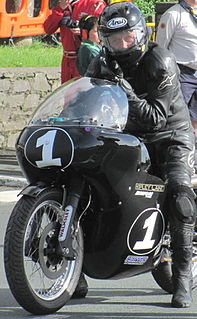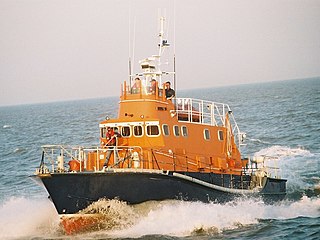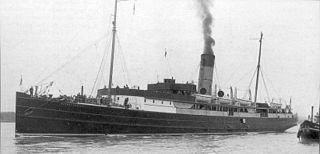This article has multiple issues. Please help improve it or discuss these issues on the talk page . (Learn how and when to remove these template messages) (Learn how and when to remove this template message)
|
West Marine Ltd. was a wholly owned subsidiary of the Peel Engineering Company, which was founded by designer, inventor and engineer Cyril Cannell in the early 1950s to make Microcars, Karts, GRP boats and other fibreglass products.

The Peel Engineering Company was a manufacturing company based in Peel on the west coast of the Isle of Man that primarily made fibreglass boats through its subsidiary company West Marine Ltd. and fairings for motorcycles.
West Marine was located in the boat yard by the side of the River Neb at the top of Peel harbour, in the Isle of Man.

The River Neb is one of the principal rivers on the Isle of Man. It rises in the Michael hills, flows SW through Glen Helen to St John's, where it is joined by its principal tributary, the Foxdale River, and then flows NW to the Irish Sea at the town of Peel on the western coast. The river gets a fine run of seatrout in the autumn.

Peel is a seaside town and small fishing port on the Isle of Man, in the historic parish of German but administered separately. Peel is the third largest town on the island after Douglas and Ramsey but the fourth largest settlement, as Onchan has the second largest population but is classified as a village. Until 2016 Peel was also a House of Keys constituency, electing one Member of the House of Keys (MHK), who, from September 2015, was Ray Harmer. Peel has a ruined castle on St Patrick's Isle, and a cathedral, seat of the Diocese of Sodor and Man.

The Isle of Man, often referred to simply as Mann, is a self-governing British Crown dependency in the Irish Sea between Great Britain and Ireland. The head of state is Queen Elizabeth II, who holds the title of Lord of Mann and is represented by a lieutenant governor. Defence is the responsibility of the United Kingdom.
Their products included an 18-foot Inshoreman boat nicknamed the 'Peel Pig'. This was a simple small fishing boat with an outboard engine and a small cuddy forward. They were made at a factory in Jurby at the North of the Isle of Man.

A cuddy is a small room or cupboard, particularly on a boat. Sometimes a cuddy refers to a small but cosy hut. The origin of the term is not clear. Cuddy was in use in colonial America as early as 1655. The term may derive from the Dutch kajuit, meaning a small cabin, or from the French cahute, meaning a hut.

Jurby is one of the seventeen parishes of the Isle of Man.
They also produced a 25-foot Midshoreman designed by Dr. E. C. B. Corlett, which was especially suited to the Irish Sea, they were fitted with an inboard diesel engine and Z outdrive. These craft had a forward 2-berth cabin, a 2-berth mid-cabin which doubled up as a galley/saloon, and a separate head. The wheelhouse was open to the rear straight onto the deck. There were only supposed to be three of these ever made, to qualify for an Isle of Man Government business grant, which was never received.
Reverend Dr Ewan Christian Brew Corlett, OBE, FREng was a British author, naval architect and consultant. He was pivotal to the restoration of the SS Great Britain from a sandbank in the Falklands, to Bristol. He also wrote several papers on the subject of naval architecture and books on the SS Great Britain.

The Irish Sea separates the islands of Ireland and Great Britain; linked to the Celtic Sea in the south by St George's Channel, and to the Inner Seas off the West Coast of Scotland in the north by the Straits of Moyle.
Additionally a 33- or 35-foot Offshoreman was produced, which was a motor sailer, with possibly only one or two built. West Marine Ltd also produced a small rowboat/tender with possible sailing capabilities; this is believed to be a GRP copy of an old boat that was lying around the yard at the time.
The company West Marine Ltd was finally dissolved in 1997.
- Inshoreman
- Offshoreman
- Midshoreman
















